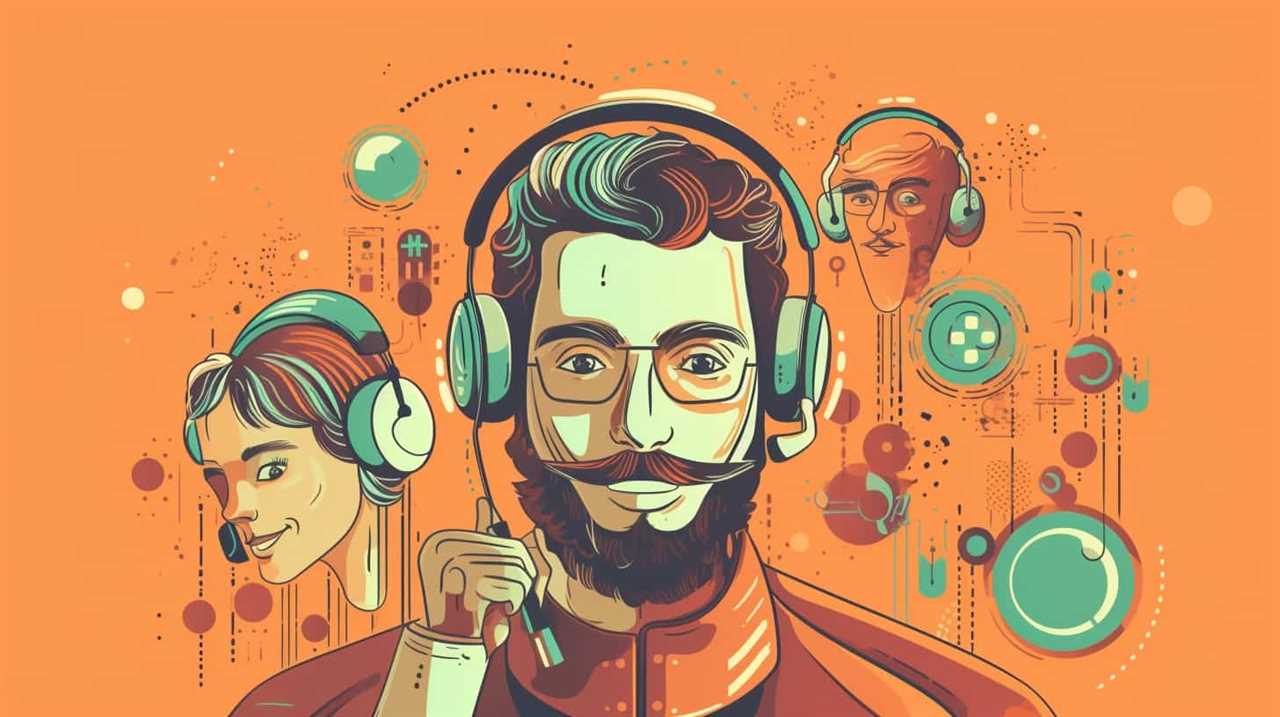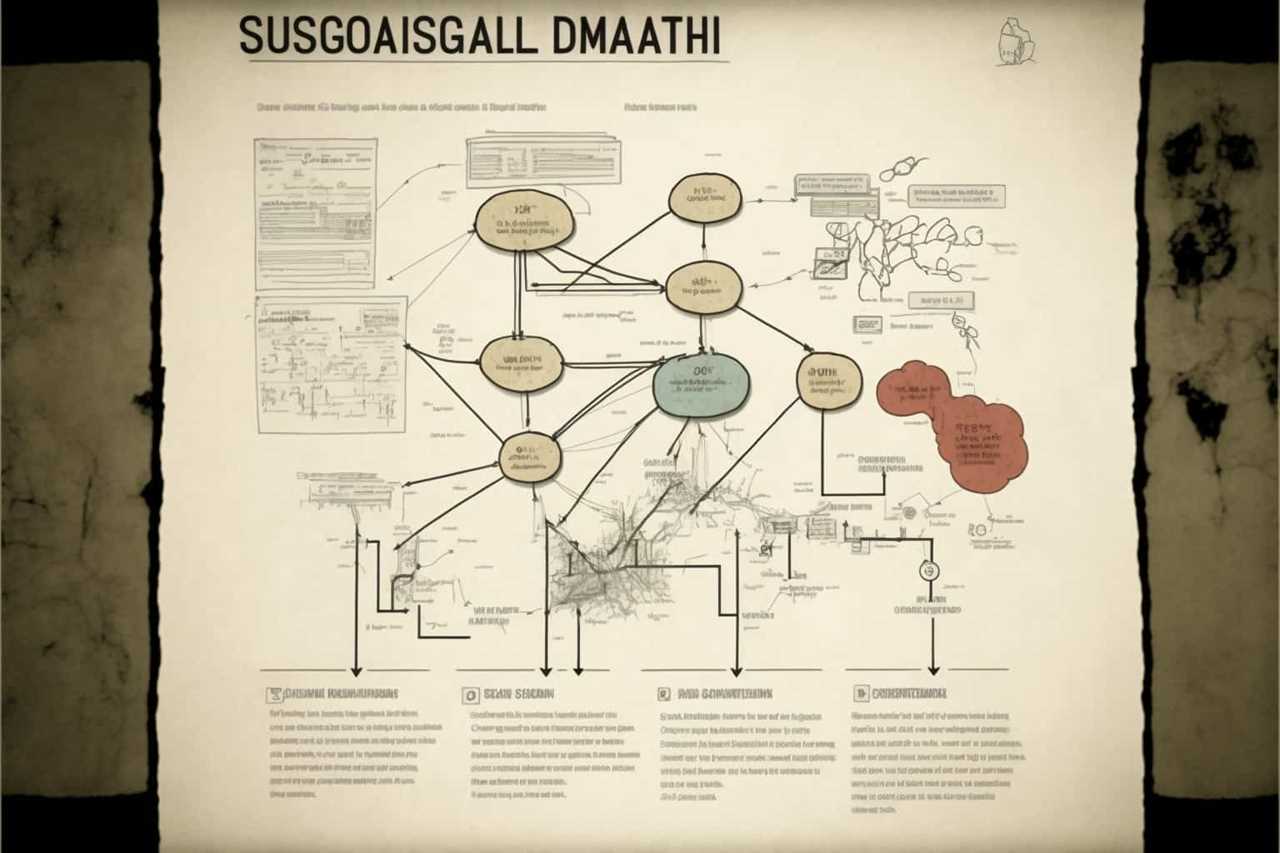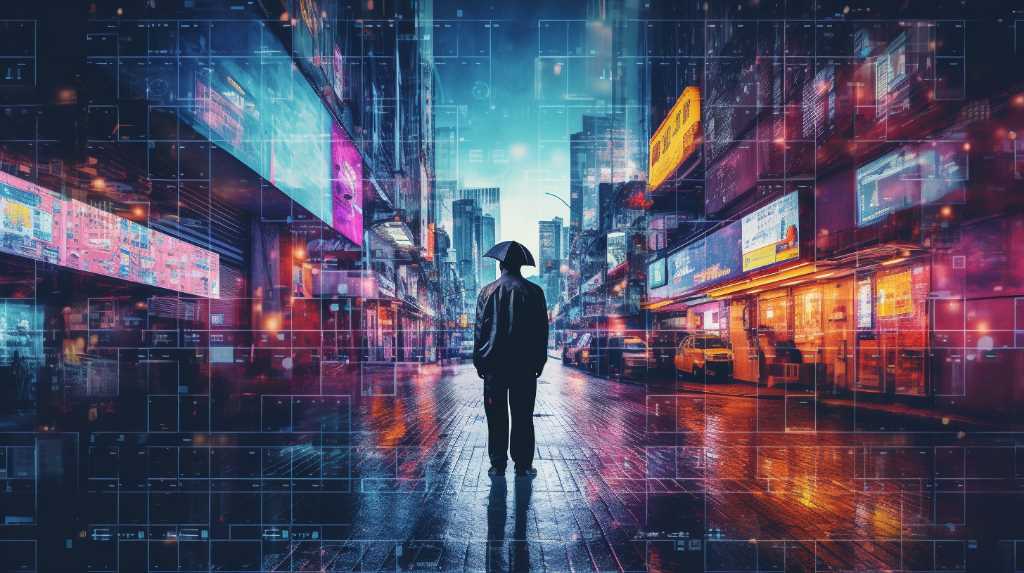Picture a world where education transforms into an exciting adventure, personalized for every individual. Step into the universe of Education AI, where we, as students, are guided towards a future filled with boundless opportunities.
With the power of artificial intelligence, we can now unlock a new era of personalized learning, intelligent tutoring systems, and virtual reality experiences.
Join us as we embark on this transformative journey, where Education AI revolutionizes the way we learn, grow, and thrive.
Key Takeaways
- Education AI revolutionizes learning by integrating technology into education and providing personalized and adaptive learning experiences.
- AI enhances the learning experience and improves student outcomes by analyzing data to identify individual learning needs and assisting teachers in creating engaging content and automating tasks.
- Gamification techniques and augmented reality in education increase engagement, provide real-time feedback, and enhance the learning experience by making abstract concepts tangible and promoting collaborative learning.
- Natural language processing and machine learning algorithms in education enable personalized feedback, adaptive instruction, language learning support, and data-driven decision making to optimize instructional strategies and improve student performance.
The Role of Education AI
Education AI plays a crucial role in revolutionizing the way we learn. With advancements in technology, the integration of artificial intelligence (AI) into education has become a game-changer. AI has the potential to transform traditional classrooms by providing personalized and adaptive learning experiences. By analyzing large amounts of data, AI can identify individual learning needs and tailor instruction accordingly. This not only enhances the learning experience but also improves student outcomes.

AI can also assist teachers in creating engaging and interactive content, automating administrative tasks, and providing real-time feedback. Furthermore, AI-powered virtual tutors and chatbots can provide immediate support and guidance to students, fostering independent learning. By leveraging the power of AI, education can become more efficient, effective, and accessible, ultimately improving the overall quality of education.
Transitioning into the next section, let’s explore how AI enhances personalized learning.
Enhancing Personalized Learning
With the integration of AI into classrooms, we can enhance personalized learning by analyzing individual learning needs and tailoring instruction accordingly. AI technology offers immense potential in transforming learning experiences and making education more personalized than ever before.
Here are four ways AI is enhancing personalized learning:

- Adaptive learning platforms: AI-powered platforms adapt to students’ strengths and weaknesses, providing targeted content and personalized feedback.
- Intelligent content recommendations: AI algorithms analyze students’ performance and preferences to recommend relevant and engaging learning materials.
- Virtual tutors: AI-driven virtual tutors can provide personalized support, answering questions and guiding students through challenging concepts.
- Data-driven insights: AI tools analyze vast amounts of student data to identify patterns and trends, enabling educators to make informed decisions about individualized instruction.
By leveraging AI in education, we can harness the power of technology to create tailored learning experiences that meet the unique needs of each student.
Now, let’s explore how intelligent tutoring systems further enhance this personalized approach to education.
Intelligent Tutoring Systems
Integrating AI into classrooms, we can now explore the potential of intelligent tutoring systems to further enhance personalized learning. These systems leverage artificial intelligence to provide individualized instruction and support to students, adapting to their unique needs and learning styles. By analyzing student data, such as performance, preferences, and progress, intelligent tutoring systems can deliver targeted feedback, guidance, and resources in real-time. This not only helps students to better understand and master concepts, but also allows teachers to identify areas where additional support may be needed.
To illustrate the impact of intelligent tutoring systems, let’s take a look at the following table highlighting their key features and benefits:

| Features | Benefits |
|---|---|
| Personalized instruction | Tailored learning experiences for each student |
| Real-time feedback | Immediate identification of misconceptions or errors |
| Adaptive learning paths | Adjusts content and difficulty based on student progress |
| Continuous assessment | Ongoing evaluation to inform instruction and interventions |
| Data-driven insights | Enables educators to make data-informed decisions |
Incorporating intelligent tutoring systems into the educational landscape holds great promise for transforming learning with AI. It empowers both students and teachers, fostering personalized and effective educational experiences.
Adaptive Assessment and Feedback
We can explore the potential of adaptive assessment and feedback to enhance personalized learning through AI in education. By leveraging AI technology, adaptive assessment can provide real-time insights into students’ progress and tailor learning experiences accordingly.
Here’s how adaptive assessment and feedback can transform learning:
- Personalization: AI algorithms can analyze students’ performance data and provide individualized feedback, catering to their specific strengths and weaknesses.
- Continuous Monitoring: Adaptive assessment allows continuous monitoring of students’ progress, identifying areas where they may be struggling and providing targeted support.
- Timely Intervention: AI-powered systems can detect learning gaps and intervene promptly, offering personalized recommendations and resources to help students improve.
- Progress Tracking: Adaptive assessment enables educators to track students’ progress over time, identifying patterns and adapting instructional strategies to optimize learning outcomes.
With adaptive assessment and feedback powered by AI, education can be transformed into a more personalized and effective experience, empowering students to reach their full potential.

Virtual Reality in Education
Virtual reality enhances the learning experience in education by immersing students in interactive and realistic simulations. It allows students to explore virtual environments, engage in hands-on activities, and gain a deeper understanding of complex concepts. With the advancements in technology, virtual reality has become more accessible and affordable, making it an effective tool for transforming education.
| Benefits of Virtual Reality in Education | ||
|---|---|---|
| Enhanced Engagement | Improved Retention | Real-world Application |
| Virtual reality captivates students’ attention and keeps them engaged in the learning process. | It has been found that students who learn through virtual reality retain information better. | Virtual reality provides opportunities for students to apply their knowledge in real-world scenarios, preparing them for future challenges. |
| Personalized Learning | Accessible Learning | Collaborative Learning |
| Virtual reality allows for personalized learning experiences tailored to individual students’ needs and preferences. | It provides equal access to education for students with physical disabilities or limitations. | Virtual reality enables students to collaborate with peers, solving problems and working together in virtual environments. |
Gamification of Learning
The implementation of educational AI is revolutionizing the learning experience by introducing gamification. Here’s how AI can help enhance education through gamification:
- Personalized learning: AI algorithms can analyze individual student data and create customized learning paths, adapting to their strengths and weaknesses.
- Increased engagement: Gamification techniques like points, badges, and leaderboards make learning fun and motivate students to actively participate.
- Real-time feedback: AI-powered systems can provide immediate feedback, allowing students to track their progress and make adjustments to their learning strategies.
- Data-driven insights: AI can analyze large amounts of data to identify patterns and trends, helping educators make informed decisions about instructional strategies and interventions.
Augmented Reality Applications
One of the exciting applications of augmented reality in education is its ability to enhance the learning experience. By integrating AI in education, we can create immersive and interactive learning environments that engage students on a whole new level.
Augmented reality allows students to visualize complex concepts and interact with virtual objects, making abstract ideas more tangible and easier to understand. With AI and teaching, educators can personalize the learning experience, adapting content to individual student needs and preferences.

AI can also provide real-time feedback and assessment, helping students track their progress and identify areas for improvement. Additionally, augmented reality applications can facilitate collaborative learning, allowing students to work together on projects and simulations.
Natural Language Processing in Education
Integrating natural language processing in education enhances the learning experience by enabling personalized and interactive communication with students. Here’s how AI can help education through natural language processing:
- Personalized Feedback: AI algorithms can analyze students’ written responses and provide immediate feedback, helping them understand their mistakes and improve their writing skills.
- Language Learning Support: AI-powered chatbots and virtual assistants can engage students in conversations, providing language practice and helping them improve their speaking and listening skills.
- Intelligent Tutoring: AI algorithms can understand students’ individual learning needs and adapt the content and pace of instruction accordingly, providing personalized tutoring and support.
- Language Assessment: AI can automate language assessments, analyzing students’ writing and speaking samples to evaluate their proficiency level accurately and objectively.
Machine Learning Algorithms
To further enhance the capabilities of education AI, we can explore the application of machine learning algorithms. Machine learning algorithms enable AI to analyze and interpret vast amounts of data, allowing educators to personalize learning experiences for students. By leveraging these algorithms, AI can adapt and optimize instructional strategies based on individual student needs, preferences, and learning styles.
This has the potential to revolutionize the education system by providing tailored content, real-time feedback, and personalized guidance to each student. With AI’s ability to process and analyze data at an unprecedented scale, educators can gain valuable insights into student performance, identify areas of improvement, and make data-driven decisions to enhance teaching methodologies.

The integration of machine learning algorithms into education AI holds immense promise in transforming education and empowering learners. As we delve into the topic of data-driven decision making, we’ll explore how AI can harness data to inform educational practices and drive positive outcomes for students.
Data-Driven Decision Making
We use data to inform and drive our decision-making process in education AI. Data-driven decision making is a crucial aspect of transforming learning with education AI. By leveraging the power of AI and education technology, we can make more informed and effective decisions that positively impact student learning outcomes.
Here are four key ways in which data-driven decision making can revolutionize education with AI:
- Personalized learning: AI can analyze vast amounts of student data to identify individual learning needs and tailor instruction accordingly.
- Early intervention: AI can detect patterns and warning signs, enabling educators to intervene early and provide targeted support to struggling students.
- Curriculum development: By analyzing data on student performance, AI can help identify areas where the curriculum needs improvement and suggest modifications.
- Educational resource allocation: Data-driven decision making can help allocate resources more efficiently, ensuring that students have access to the right tools and support.
Through data-driven decision making, AI has the potential to greatly enhance education and empower students to reach their full potential.

Transitioning into the next section about ‘personal assistant AI for students’, let’s explore how AI can serve as a valuable companion in the learning journey.
Personal Assistant AI for Students
As we delve into the topic of personal assistant AI for students, it becomes evident that AI can serve as a valuable companion in their learning journey.
AI in education is transforming learning by providing students with personalized support and assistance. Personal assistant AI can help students with a wide range of tasks, such as organizing their schedules, setting reminders, and answering their questions.
With the advancement of natural language processing and machine learning algorithms, personal assistant AI is becoming more intelligent and capable of understanding and responding to students’ individual needs. This technology not only enhances students’ productivity and efficiency but also promotes independent learning and critical thinking skills.

AI-Powered Content Creation
AI-powered content creation has the potential to transform learning by providing innovative tools and resources for educators. Here are four ways AI can revolutionize content creation in education:
- Personalized Learning: AI algorithms can analyze student data to create customized learning materials tailored to individual needs, helping students grasp concepts more effectively.
- Enhanced Creativity: AI can generate interactive and engaging content, such as videos, simulations, and games, that make learning more enjoyable and impactful.
- Efficient Content Generation: AI can automate the process of creating educational materials, saving educators valuable time and allowing them to focus on delivering high-quality instruction.
- Adaptive Feedback: AI-powered content creation can provide immediate feedback to students, helping them identify areas of improvement and reinforcing their learning in real-time.
By harnessing the power of AI in education, content creation can become more efficient, personalized, and engaging, transforming the way students learn.
Now, let’s delve into the next topic of automated grading and feedback.
Automated Grading and Feedback
Automated grading and feedback systems have revolutionized the way educators assess student work and provide timely, personalized responses. With the advancement of AI in education, these systems have become more sophisticated and accurate, enabling teachers to efficiently evaluate large volumes of assignments.

Artificial intelligence education has transformed the learning experience by offering immediate feedback, allowing students to identify and address their areas of improvement. This real-time assessment not only saves teachers time but also enhances the learning process, as students can receive instant guidance and make necessary adjustments.
Additionally, automated grading eliminates bias and ensures fairness in the evaluation process. By leveraging AI technology, educators can provide valuable feedback and support to students, fostering a more effective and inclusive learning environment.
Predictive Analytics in Education
With the integration of predictive analytics in education, we can now anticipate student needs and tailor instruction to optimize their learning experience. This revolutionary technology offers several benefits that are transforming learning with education AI:
- Early identification of struggling students: Predictive analytics enables educators to identify students who may be at risk of falling behind, allowing for timely intervention and support.
- Personalized learning pathways: By analyzing student data, predictive analytics can generate individualized learning pathways, ensuring that each student receives targeted instruction that meets their specific needs.
- Improved student engagement: With the help of predictive analytics, educators can identify patterns and trends in student behavior, enabling them to adapt their teaching methods and materials to increase student engagement.
- Enhanced decision-making for educators: Predictive analytics provides educators with data-driven insights that inform their instructional strategies, helping them make informed decisions that positively impact student outcomes.
Ethical Considerations of Education AI
As we delve into the ethical considerations of education AI, we must address the potential implications and consequences it may have on students and educators alike. While AI has the potential to transform learning and enhance educational experiences, it is crucial to navigate this territory with caution. On one hand, there are concerns about privacy and data security, as AI systems collect and analyze vast amounts of personal information. Additionally, there is a risk of exacerbating inequalities in education, as not all students may have access to AI-powered tools. On the other hand, AI can also positively impact education by personalizing learning experiences, improving efficiency, and assisting educators in providing targeted support. Striking a balance between harnessing the benefits of AI and mitigating its potential negative effects is paramount.

| Ethical Considerations of Education AI |
|---|
| Privacy and data security |
| Inequality in access to AI-powered tools |
| Potential for biased algorithms |
| Ethical use of student data |
| Ensuring transparency and accountability |
| Striving for equity in AI implementation |
Addressing Bias in AI Systems
To effectively address bias in AI systems, we must actively identify and rectify any potential discriminatory algorithms or data inputs. In the AI education industry, it’s crucial to ensure that AI in teaching and learning is fair and unbiased.
Here are four steps we can take to address bias in AI systems:
- Conduct comprehensive audits: Regularly evaluate AI systems and algorithms to identify any biases or discriminatory patterns.
- Diverse data collection: Ensure that the data used to train AI models is representative of the diverse student population to avoid perpetuating biases present in the data.
- Transparent decision-making: Promote transparency by explaining the reasoning behind AI-driven decisions, allowing for scrutiny and accountability.
- Ongoing monitoring and improvement: Continuously monitor and refine AI systems to address biases and ensure fairness.
AI for Special Education Needs
Addressing bias in AI systems, we actively identify and rectify any potential discriminatory algorithms or data inputs, including in the context of AI for special education needs.
AI has the potential to revolutionize special education by providing personalized and adaptive learning experiences for students with diverse learning needs. By analyzing vast amounts of data, AI can identify patterns and tailor instruction to meet individual needs, helping students with special education needs to thrive academically.

AI can also assist in assessing and monitoring progress, providing real-time feedback and interventions to support their learning journey.
Furthermore, AI can assist educators in creating inclusive learning environments by providing resources, tools, and strategies to meet the unique needs of students with disabilities.
With the proper implementation and ethical considerations, AI has the potential to transform learning for students with special education needs.
Redefining Teacher-Student Roles
How can education AI redefine the roles of teachers and students? With the integration of AI in education, the traditional roles of teachers and students are being transformed. Here’s how:

- Personalized Learning: AI technology allows for individualized instruction tailored to each student’s unique needs, shifting the teacher’s role from a one-size-fits-all approach to a facilitator of personalized learning experiences.
- Data-driven Insights: AI tools can analyze vast amounts of student data, providing valuable insights to teachers about their students’ progress, strengths, and areas for improvement. This empowers teachers to better understand their students and customize their instruction accordingly.
- Collaborative Learning: AI can facilitate collaborative learning experiences by connecting students from different locations and backgrounds, allowing them to learn from and with each other. This promotes a more interactive and engaging learning environment.
- Adaptive Assessments: AI-powered assessments can adapt to each student’s level of understanding, providing immediate feedback and helping teachers identify areas where students need additional support. This transforms the teacher’s role in assessment from simply grading to using data to inform instruction.
Promoting Lifelong Learning
As we continue exploring the transformative impact of education AI, let’s now delve into the crucial role it plays in promoting lifelong learning.
Education AI has the potential to revolutionize the way we learn by providing personalized and adaptive learning experiences that cater to individual needs and interests. By harnessing the power of AI, learners can access a wealth of resources and tools that facilitate continuous learning.
AI-powered platforms can analyze learner data to identify knowledge gaps and recommend relevant content, ensuring that learning never stops. Additionally, AI can foster collaboration and engagement by facilitating virtual learning communities and enabling real-time feedback.
Bridging the Digital Divide
We can bridge the digital divide by ensuring equal access to education AI for all individuals. Here are four ways we can achieve this:

- Infrastructure: Invest in building the necessary digital infrastructure, such as high-speed internet and reliable devices, in underserved communities.
- Affordability: Make education AI tools and resources affordable and accessible to all, regardless of socio-economic background.
- Training and Support: Provide comprehensive training and ongoing support to teachers and students on how to effectively use education AI tools.
- Localized Content: Develop AI-powered educational content that’s culturally relevant and tailored to the specific needs of different regions and communities.
By implementing these strategies, we can empower every individual, regardless of their background, to benefit from the transformative potential of education AI.
Now, let’s explore how AI can enhance classroom management.
AI-Enhanced Classroom Management
AI enhances classroom management by streamlining administrative tasks and optimizing student engagement.
With AI-enhanced classroom management systems, teachers can automate routine administrative tasks such as attendance tracking, grading, and scheduling, allowing them to focus more on delivering high-quality instruction.

These systems can also provide real-time insights on student learning and behavior, helping teachers to identify struggling students and tailor their instruction accordingly. AI algorithms can analyze data from various sources, such as student assessments and online interactions, to provide personalized recommendations for each student.
For example, AI can suggest additional resources or activities that align with a student’s learning style and preferences.
Collaborative Learning With AI
Collaborative learning with AI enhances student engagement and fosters a more interactive and dynamic classroom environment. Here are four ways AI is transforming collaborative learning in education:
- Personalized Learning: AI algorithms can analyze student data to provide personalized recommendations and resources, catering to individual learning needs and preferences.
- Intelligent Tutoring: AI-powered virtual tutors can provide real-time feedback, answer questions, and guide students through the learning process, promoting active engagement and deeper understanding.
- Peer Collaboration: AI platforms can facilitate virtual group projects and discussions, connecting students from different locations and promoting collaborative problem-solving and knowledge sharing.
- Data-driven Insights: AI can analyze large amounts of data generated during collaborative learning activities, providing educators with valuable insights into student participation, progress, and areas for improvement.
Enhancing Parent-Teacher Communication
Through the use of AI in collaborative learning, we can now explore how it enhances parent-teacher communication. Education AI has the ability to transform the way parents and teachers interact, providing a more efficient and effective platform for communication.

AI-powered tools can facilitate real-time updates on a student’s progress, allowing parents to stay informed and engaged with their child’s education. With features like automated messaging and personalized notifications, communication between parents and teachers becomes streamlined and tailored to individual needs.
Additionally, AI can analyze data and provide insights on a student’s learning patterns, enabling teachers to provide targeted feedback and suggestions for improvement.
AI in Higher Education
Implementing AI technology in higher education revolutionizes the way we learn and engage with academic content. AI is being used in education in various ways, shaping the future of learning. Here is how AI is currently affecting education:
- Personalized Learning: AI algorithms analyze student data to identify individual strengths, weaknesses, and learning styles, allowing for tailored educational experiences.
- Intelligent Tutoring: AI-powered virtual tutors provide personalized guidance and support, answering questions and offering explanations in real-time.
- Automated Grading: AI systems can efficiently grade assignments, freeing up valuable time for educators to focus on other critical tasks.
- Predictive Analytics: AI algorithms analyze student performance data to predict potential challenges, enabling early interventions and personalized recommendations.
As AI continues to advance, the possibilities for transforming education are endless. With its potential to enhance personalization, efficiency, and accessibility, AI holds the key to a future where education is more inclusive, engaging, and effective.

Future Possibilities of Education AI
As we look ahead to the future, AI in education holds immense potential to further revolutionize the way we learn and engage with academic content. The possibilities that lie ahead are truly exciting. AI has already made significant strides in transforming learning, but there is still much more to come. Let’s explore some of the future possibilities of education AI:
| Possibility | Description | Benefits |
|---|---|---|
| Personalized Learning | AI can adapt to individual student needs, providing targeted instruction and feedback. | Improved student engagement and outcomes. |
| Intelligent Tutoring Systems | AI-powered tutors can provide personalized guidance and support to students. | Enhanced student learning and skill development. |
| Data-driven Decision Making | AI can analyze vast amounts of educational data to inform instructional strategies and policies. | Informed decision making for educators and policymakers. |
With the continued advancement of AI technology, the future of education holds tremendous potential for transforming learning and enhancing student outcomes. AI has the power to revolutionize personalized learning, provide intelligent tutoring, and enable data-driven decision making. By harnessing the capabilities of education AI, we can create a more effective and engaging learning experience for all.
Frequently Asked Questions
How Can AI Be Used to Address Bias in Education Systems?
Addressing bias in education systems can be achieved through the use of AI.
By leveraging AI technology, we can identify and mitigate biases that exist within educational practices.

Through data analysis and machine learning algorithms, AI can help ensure equal access to education and promote fairness in the learning process.
AI can also assist in identifying and eliminating discriminatory practices, allowing for a more inclusive and equitable educational experience for all students.
What Are Some Ethical Considerations to Keep in Mind When Implementing AI in Education?
When implementing AI in education, there are several ethical considerations to keep in mind.
One important aspect is ensuring the privacy and security of student data.

We must also strive to minimize bias and ensure fairness in AI algorithms used for educational purposes.
Additionally, transparency and explainability of AI systems are crucial to maintain trust and accountability.
Lastly, it’s essential to consider the potential impact on human interaction and the role of teachers in the learning process.
How Can AI Be Used to Support Students With Special Education Needs?
Using AI to support students with special education needs is a topic that requires careful consideration.

By harnessing the power of AI, we can create personalized learning experiences tailored to individual needs. AI can analyze data and provide real-time feedback, assist in creating adaptive lesson plans, and offer additional resources to enhance learning.
Additionally, AI can support communication and social skills development, providing a safe and inclusive environment.
However, it’s crucial to address ethical considerations and ensure that AI tools are used responsibly and inclusively.
In What Ways Can AI Redefine the Roles of Teachers and Students in the Classroom?
In what ways can AI redefine the roles of teachers and students in the classroom?

AI has the potential to revolutionize education by transforming the traditional teacher-student dynamic. With AI, teachers can take on a more facilitative role, allowing students to take ownership of their learning.
AI can provide personalized learning experiences, adapt to individual needs, and offer immediate feedback. This shift in roles can promote student autonomy, critical thinking, and collaboration, ultimately enhancing the overall learning experience.
How Can AI Help Bridge the Digital Divide in Education?
How can AI help bridge the digital divide in education?
By providing access to quality education for all, regardless of their geographical location or economic background.

AI can offer personalized learning experiences, adaptive assessments, and virtual classrooms, ensuring that every student has an equal opportunity to learn and succeed.
With AI, we can overcome the barriers of limited resources and inadequate infrastructure, empowering students to thrive in the digital age and create a more inclusive and equitable educational landscape.
Conclusion
As we embrace the transformative power of Education AI, we unlock the door to a world where personalized learning becomes a magical journey. With intelligent tutoring systems guiding us like wise mentors, adaptive assessment and feedback pushing us to new heights, and virtual reality expanding our horizons, education becomes an immersive experience.
Collaborative learning with AI becomes a dance of minds, while enhanced parent-teacher communication bridges the gap between home and school. With AI in higher education, the possibilities are limitless.

The future of education is a symphony of intelligence and innovation.











